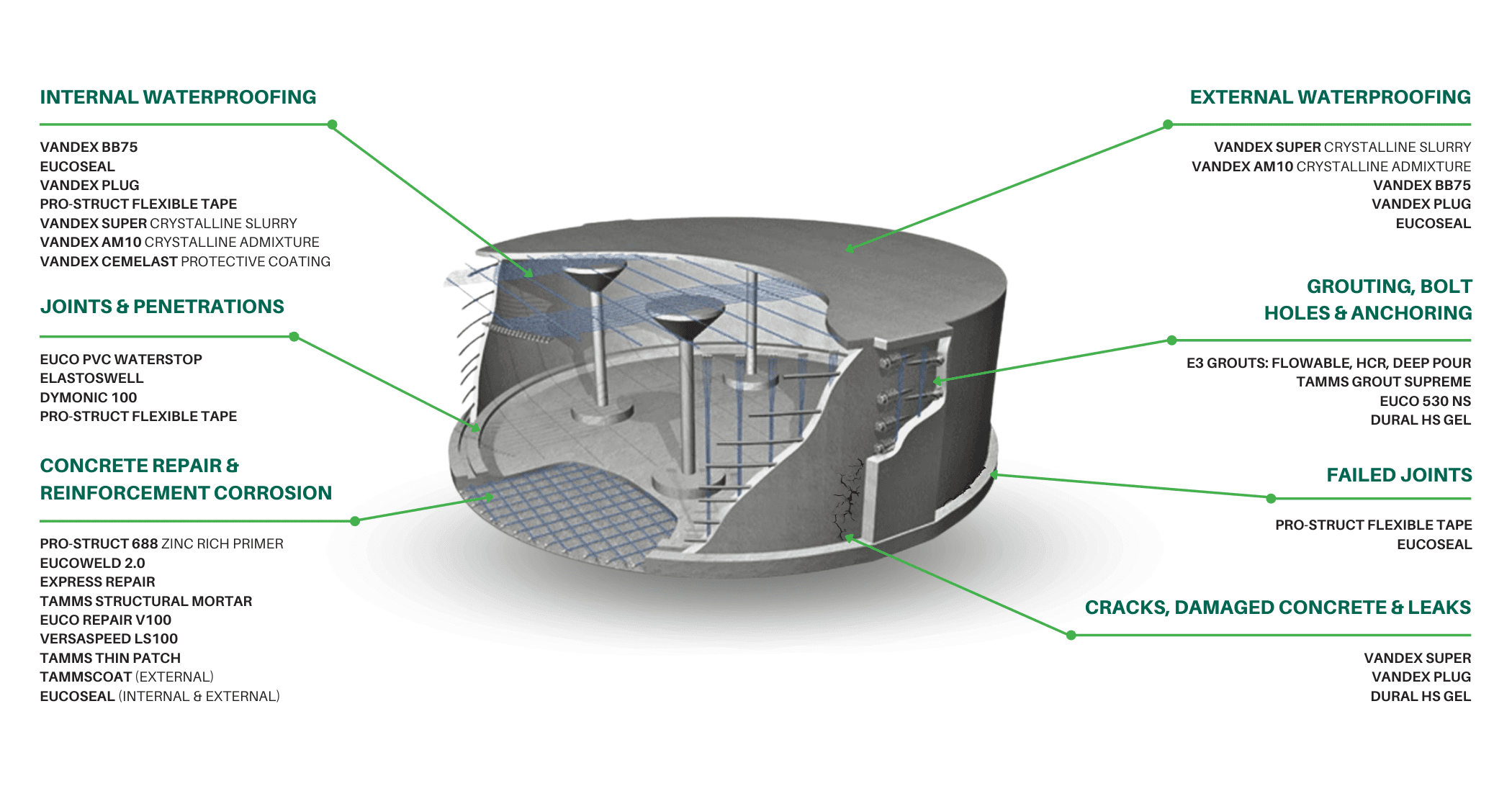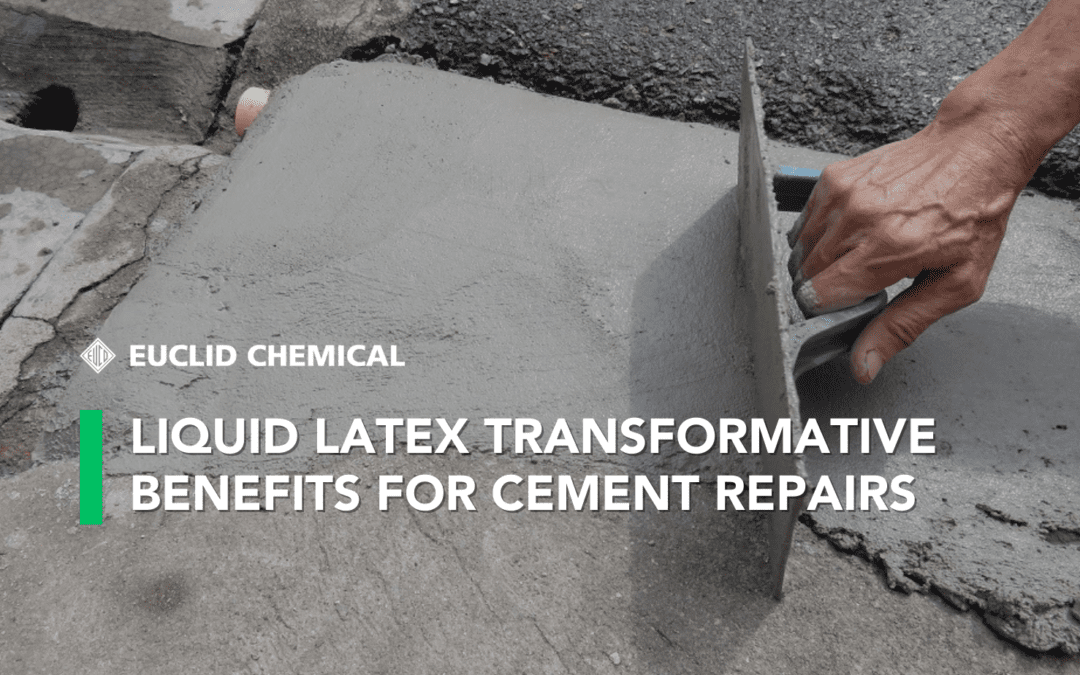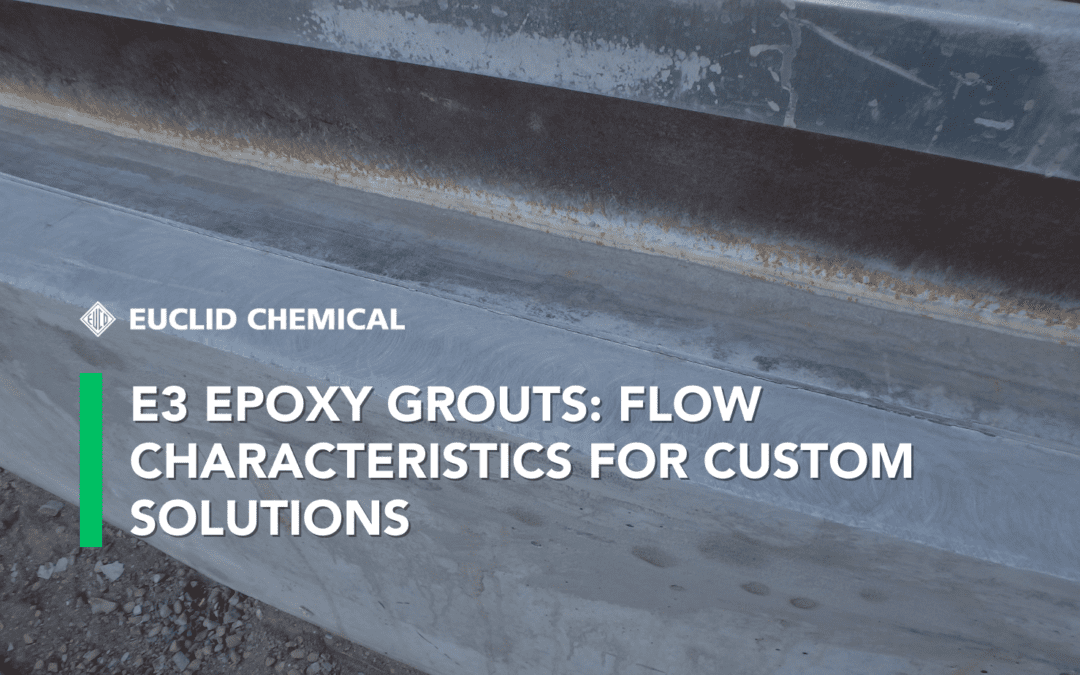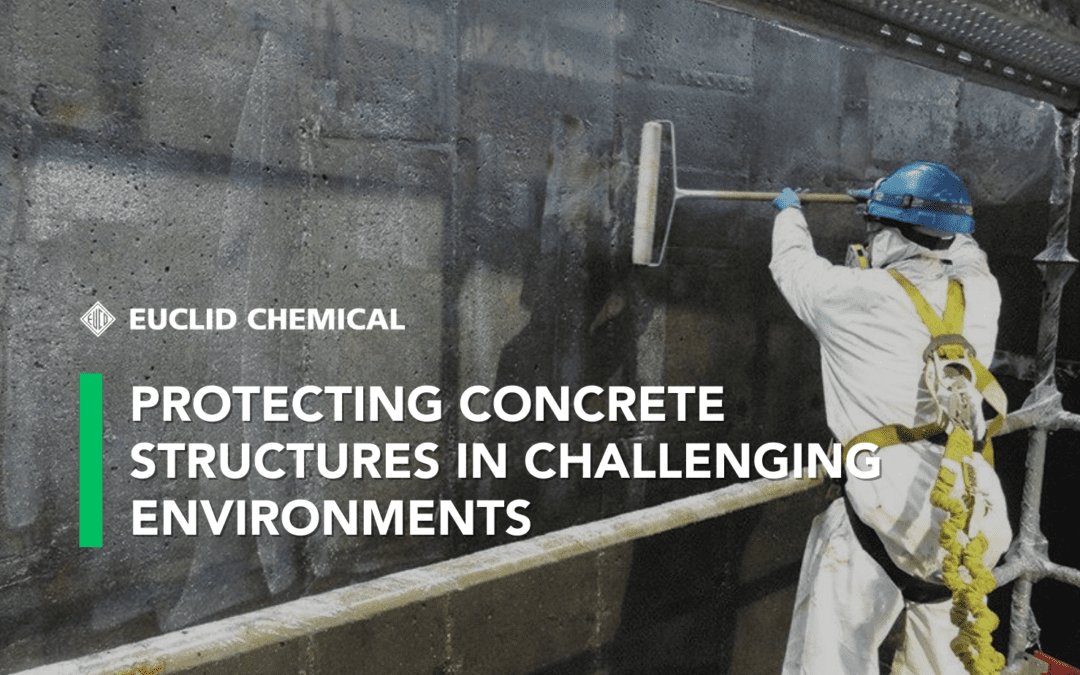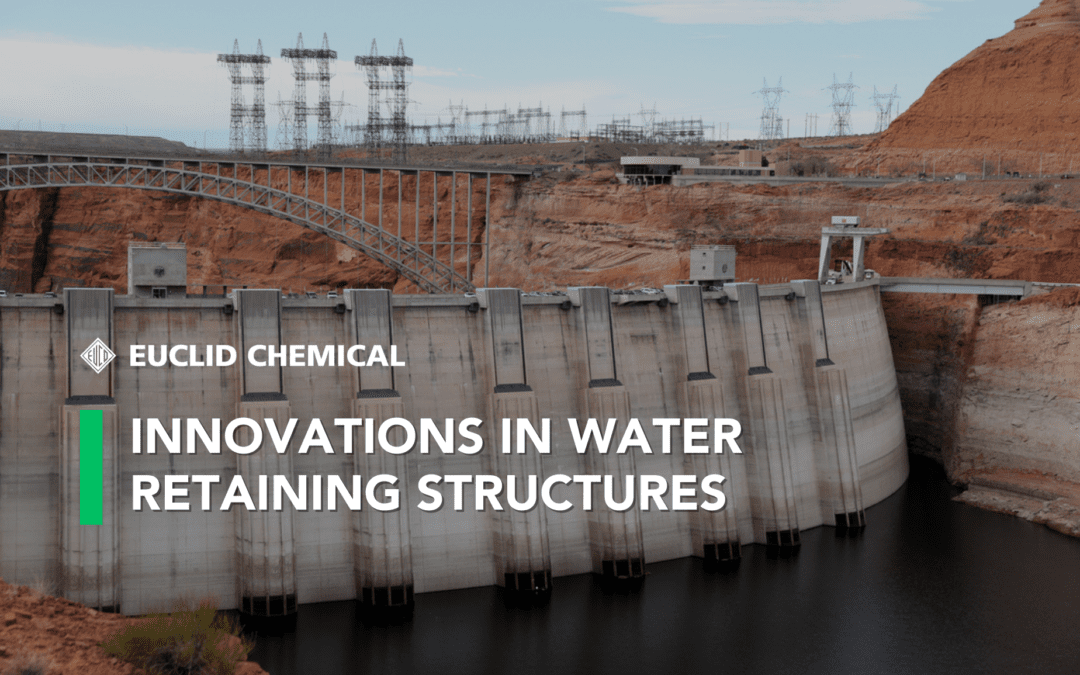
Innovations in Water Retaining Structures
Durable and long-lasting water retaining structures are vital for managing water resources, ensuring water safety, and preserving infrastructure integrity. However, they encounter various challenges, such as internal waterproofing issues, concrete repair and reinforcement corrosion, which can compromise their effectiveness.
Internal and External Waterproofing
When enhancing internal waterproofing, it fortifies the structure against water infiltration and maintains durability and structural integrity. Euclid Chemical presents an array of cutting-edge waterproofing solutions, be it admixtures which seamlessly incorporate into concrete mixes or post application products for concrete, masonry and brickwork. The range includes the following waterproofing solutions; Vandex BB75, Vandex Plug, Vandex Super, Vandex AM10, and Vandex Cemelast. This integration forms a robust, impermeable matrix, bolstering durability and reducing the chances of internal leaks. Equally essential is external waterproofing, shielding constructions from water ingress and environmental threats. Euclid Chemical’s top-tier waterproofing membranes and coatings such as Eucoseal, crafted to withstand harsh conditions, establish a resilient barrier upon external application. This barrier adeptly fends off water infiltration, significantly elongating the structure’s lifespan and ensuring structural resilience.
Joints and Penetrations
In water-retaining structures, joints and penetrations represent critical points of vulnerability, prone to potential leaks. To address this challenge, Euclid Chemical provides specialised sealants like Dymonic 100 (external) and expansion joint systems such as Euco PVC Waterstop. Meticulously engineered, these solutions are tailored to seal joints and penetrations effectively, offering robust protection against water intrusion. By deploying these products, structures benefit from enhanced integrity over the long term, safeguarding against water-related issues and ensuring lasting durability.
Grouting, Bolt Holes, and Anchoring
Ensuring structural stability and effective waterproofing hinges on meticulous grouting, bolting, and anchoring. Euclid Chemical presents an extensive selection of solutions, including grouts like E3 Flowable, E3 HCR, and E3 Deep Pour, alongside anchoring systems such as Euco 530 NS and Dural HS Gel, and high-performance cementitious grout repair mortars like Tamms Grout Supreme. Tailored to fill voids, secure bolts, and anchor structures firmly, these products deliver unmatched strength and durability. Their application significantly fortifies the structural integrity of water-retaining systems, safeguarding against potential vulnerabilities.
Cracks, Damaged Concrete, and Leaks
Cracks, damaged concrete, and leaks present formidable challenges for water-retaining structures. Euclid Chemical steps in with advanced solutions tailored to tackle these issues head-on. Products like Vandex Super for surface protection and sealing, Dural HS Gel for crack injection and repair, Vandex Plug for quick leak sealing, Euclid Chemical provides reliable remedies. These solutions effectively mend damaged areas and seal leaks, restoring structural integrity and halting further deterioration. By addressing these vulnerabilities comprehensively, Euclid Chemical ensures the resilience and longevity of water-retaining structures.
Concrete Repair and Reinforcement Corrosion
Concrete degradation and corrosion of reinforcements are prevalent concerns in water-retaining structures, especially in harsh environments. Euclid Chemical provides an extensive range of repair and protection systems meticulously crafted to combat these challenges. Our arsenal includes corrosion inhibitors, surface treatments like Eucoweld 2.0, Tammscoat and Eucoseal, and rehabilitation products such as Express Repair, Tamms Structural Mortar, Euco Repair V100, Tamms Thin Patch, and VersaSpeed LS100. These solutions effectively mitigate corrosion, extending the service life of structures and guaranteeing sustained performance over the long term.
Water retaining structures demand robust solutions to withstand the rigors of their environment and maintain functionality. With our expertise and innovative solutions, we are committed to advancing the integrity and longevity of water retaining structures worldwide.
Contact us to learn more about our solutions for water retaining structures and how we can assist with your specific project needs.

